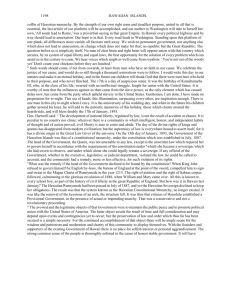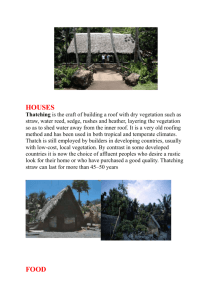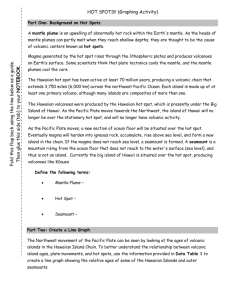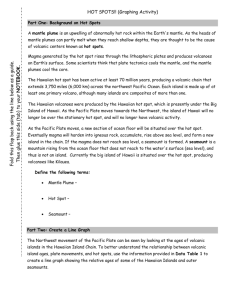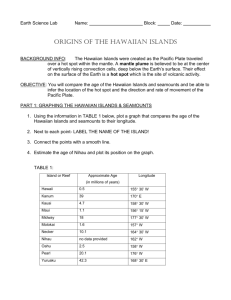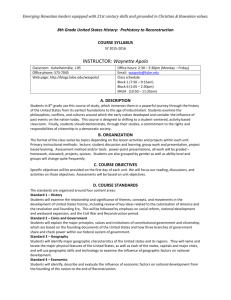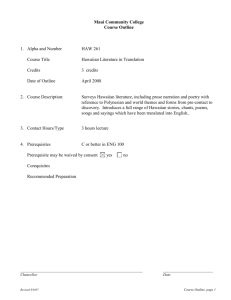Test 2 - Study Guide
advertisement
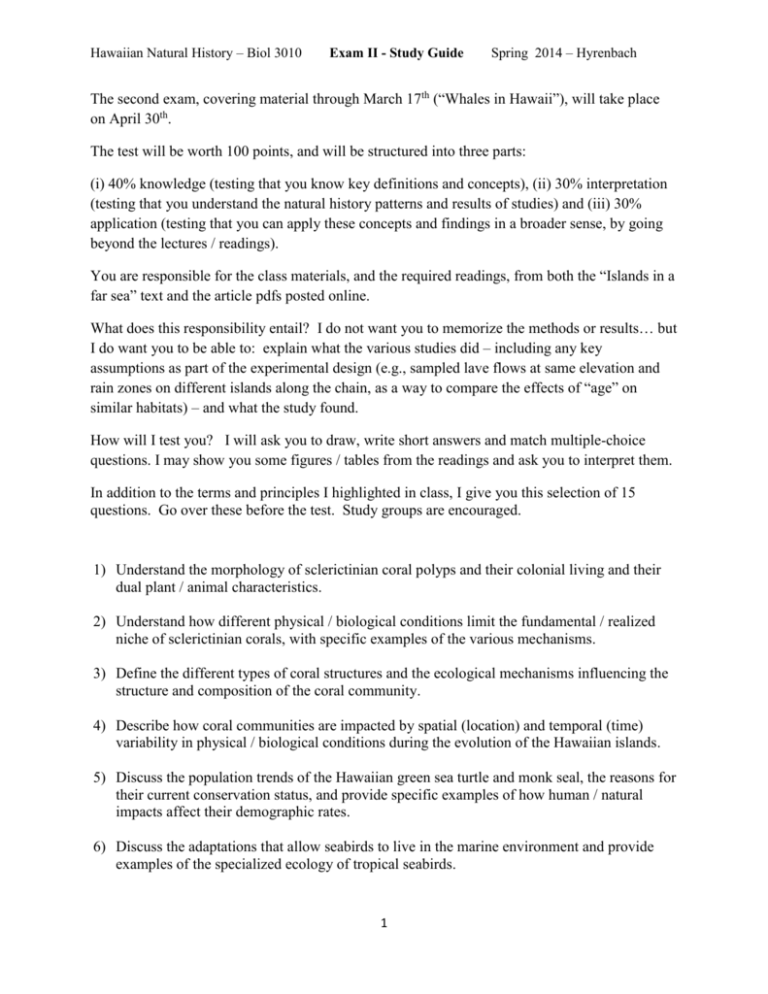
Hawaiian Natural History – Biol 3010 Exam II - Study Guide Spring 2014 – Hyrenbach The second exam, covering material through March 17th (“Whales in Hawaii”), will take place on April 30th. The test will be worth 100 points, and will be structured into three parts: (i) 40% knowledge (testing that you know key definitions and concepts), (ii) 30% interpretation (testing that you understand the natural history patterns and results of studies) and (iii) 30% application (testing that you can apply these concepts and findings in a broader sense, by going beyond the lectures / readings). You are responsible for the class materials, and the required readings, from both the “Islands in a far sea” text and the article pdfs posted online. What does this responsibility entail? I do not want you to memorize the methods or results… but I do want you to be able to: explain what the various studies did – including any key assumptions as part of the experimental design (e.g., sampled lave flows at same elevation and rain zones on different islands along the chain, as a way to compare the effects of “age” on similar habitats) – and what the study found. How will I test you? I will ask you to draw, write short answers and match multiple-choice questions. I may show you some figures / tables from the readings and ask you to interpret them. In addition to the terms and principles I highlighted in class, I give you this selection of 15 questions. Go over these before the test. Study groups are encouraged. 1) Understand the morphology of sclerictinian coral polyps and their colonial living and their dual plant / animal characteristics. 2) Understand how different physical / biological conditions limit the fundamental / realized niche of sclerictinian corals, with specific examples of the various mechanisms. 3) Define the different types of coral structures and the ecological mechanisms influencing the structure and composition of the coral community. 4) Describe how coral communities are impacted by spatial (location) and temporal (time) variability in physical / biological conditions during the evolution of the Hawaiian islands. 5) Discuss the population trends of the Hawaiian green sea turtle and monk seal, the reasons for their current conservation status, and provide specific examples of how human / natural impacts affect their demographic rates. 6) Discuss the adaptations that allow seabirds to live in the marine environment and provide examples of the specialized ecology of tropical seabirds. 1 Hawaiian Natural History – Biol 3010 Exam II - Study Guide Spring 2014 – Hyrenbach 7) Describe the geological and benthic habitats (islands, atolls, sea stacks) of the NW Hawaiian islands, including their relative sequence (NW – SE position), type of feature, and age. 8) Provide examples of native species from the NW Hawaiian Islands and some of their adaptations for live in these atolls and lava stacks. 9) Discuss how Kawainui marsh teaches us about changes in O’ahu as determined by two means: (i) the changing geological facies, and (ii) pollen counts from sediment cores. 10) Define (and draw) key terms relating to the geological features influencing the water cycle. 11) Provide examples of native species in Hawaiian freshwaters, with examples of their adaptations for live in these systems. 12) Provide examples of native species in Hawaiian rainforests, with examples of their adaptations for live in these systems. 13) Describe the patterns of vegetation (biomes) across elevation and describe the factors influencing the location of the Hawaiian cloudlands and drylands. 14) Provide examples of native species in Hawaiian alpine areas, with examples of their adaptations for live in these systems. 15) Provide examples of introduced species in the wide variety of Hawaiian ecosystems we have studied, with specific examples of how they are impacting the native flora and fauna. 2

